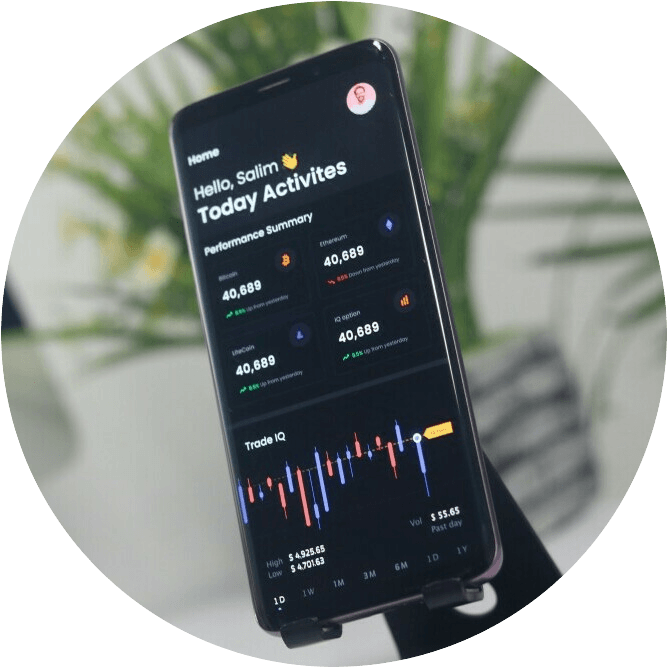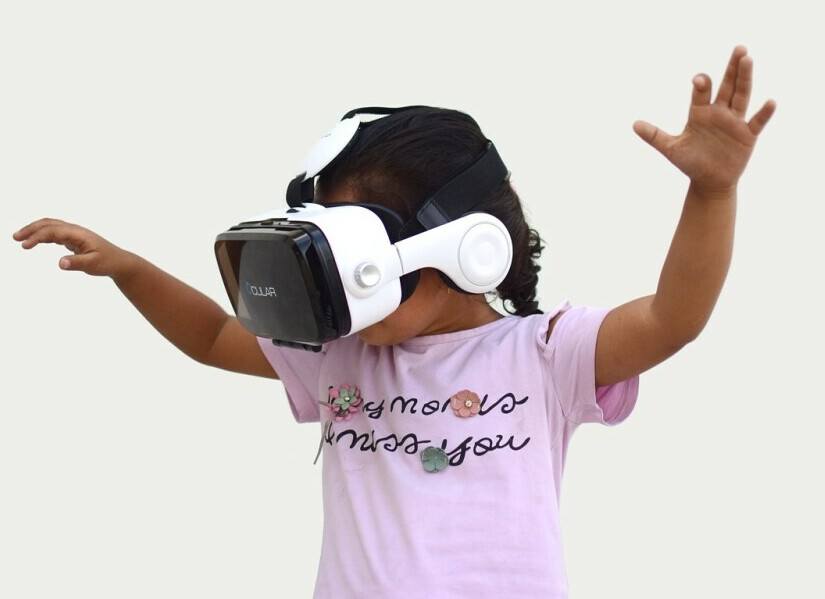As the technology for smartphones gets more mature, it is getting harder for phone companies to come up with innovative ideas to draw consumers to buy their new smartphones.
Many tech companies are turning to Virtual Reality technologies, searching for new product ideas to win customers.
We wish to perform our Virtual Reality Headsets Review here, to identify the next breakthrough product in the market.
The reason why Smartphones get into consumer hands so fast and popular, is because Smartphone meet all their needs.
When the product has all the features and functions you require to use every moment, all day long, you are going to love it and will find ways to purchase it.
This happens when Apple introduces their iPhone and iPad in the market.

Currently, most of the VR headsets need to work with a computer-generated environment and we believe this is one of the reasons preventing consumers from using it.
It is not mobile-friendly to any user who wants to bring it anywhere they want to go.
Even with the drop in pricing from all the VR manufacturers, we do not think consumers will feel a desire to get it.
Those who want to enjoy VR reality games are likely to visit arcades at shopping malls and pay a price of about US$15 per hour for the usage.
Tech companies Meta, Google, Samsung, and many other small players continue to spend huge amounts of money in developing all kinds of devices, software applications, game content, resource tools, and video display sets.
Ultimately, all these efforts aim to be the first company to come up with an innovative and hot product which consumer will love it.

Virtual Reality technology evolves from a combination of other technologies like 3D display, motion monitoring system, input interface engineering, software coding tool, etc.
Engineers are getting more experience and knowledge in integrating all these technologies into one single device.
With the arrival of Virtual Reality Headset, we can virtually transport ourselves to another location, the feeling of moving from one place to another.
The feeling is like real and you feel excited about it.
The technology actually trick your mind, fooling the cortex and part of our brain assuming we have been transported to another location.
It creates an illusion in our mind and this is one application which engineers are exploring for the next product/service to offer in the market.

Difference between Virtual Reality and Augmented Reality
Many people are confused with the term VR and AR and do not know the difference.
With the confusion, it will be difficult for people to visualize the application suitable for its usage.
Augmented Reality (AR) is the enhancement of the reality by adding digital information on top of the original image.
It is commonly being used in the apps of smartphones and tablets.
AR technology uses the camera of the smartphone or tablet, showing you the real world at the front of the camera, and add another layer of digital information (be it text or image) on top of it.
One popular apps is the Pokemon Go.
Below is the video by Blippar showing how Augmented Reality (AR) can be used:
For Virtual Reality (VR), it makes use of computer technology to create a simulated environment, make you think that you are in that virtual environment.
When you are viewing the VR, the scene in front of you is totally different.
In fact, you are viewing into a display unit (a Head-mounted Display).
Video below showing an application wearing a VR Headset:
Some scientists are exploring Virtual Reality technology to help improve our brain power.
There are plenty of opportunities for businesses to tap on, regardless in the education sector, medical field, or entertainment industry.
Currently Virtual Reality Headset is mature enough for businesses to make profit into a gaming device.
Below are 6 of the common types of VR headsets we will be reviewing on:
Meta Quest 3S
Meta has once again pushed the boundaries of virtual reality with the introduction of the Meta Quest 3S, a game-changing headset set to hit the market on October 15, 2024.
Designed to make high-quality VR experiences more accessible, this latest offering from Meta is priced at $299.99 for the 128GB version and $399.99 for the 256GB version, making it an attractive option for both new users and seasoned VR enthusiasts.
Competitive Advantages of the Meta Quest 3S
- Affordability: Positioned as a budget-friendly alternative, the Meta Quest 3S significantly lowers the price barrier for entry into the world of VR, without skimping on quality.
- Inclusion of Controllers and Game: The headset comes bundled with controllers and a copy of “Batman: Arkham Shadow,” providing immediate value and an engaging experience right out of the box.
- Adequate Display Resolution: With a resolution of 1,832 x 1,920 per eye, it offers a satisfactory visual experience that has been well-received in previous models, ensuring vibrant and immersive gameplay.
Disadvantages of the Meta Quest 3S
- Slightly Lower Resolution: Compared to higher-end VR models, the Quest 3S offers a lower resolution, which might be a consideration for those seeking top-tier graphics.
- Lack of Rumored Pancake Lenses: While the absence of these advanced lenses might be disappointing for some, it maintains a competitive edge in other areas.
The Meta Quest 3S is shaping up to be a pivotal addition to the VR market, offering a balance of affordability and functionality. Whether you’re stepping into virtual reality for the first time or looking for a cost-effective upgrade, the Quest 3S promises to deliver an impressive array of features that cater to a wide range of users.
Meta Quest 3
Meta launched Quest 3 on October 10, 2023, redefining the virtual reality landscape.
This headset can deliver an unparalleled VR experience with its sophisticated technology and immersive capabilities.
Priced at $379.99 for the 128GB version and $499 for the 512GB version at Amazon now, the Meta Quest 3 positions itself as a premium choice for VR enthusiasts and professionals alike.
Competitive Advantages of the Meta Quest 3
- High Resolution: The Quest 3 boasts a per-eye resolution of 2064 x 2208, providing incredibly sharp and detailed visuals that enhance the immersive experience.
- Powerful Performance with Snapdragon XR2 Gen 2: Equipped with the Snapdragon XR2 Gen 2 chip, the Quest 3 offers more than double the graphical performance of its predecessor, enabling smoother and more responsive interactions.
- Mixed Reality Capabilities: With advanced sensors and color passthrough cameras, the Quest 3 seamlessly blends virtual elements with the real world, offering a dynamic mixed-reality experience.
Disadvantages of the Meta Quest 3
- Higher Price Point: As a high-end VR headset, the Quest 3 comes with a premium price tag that may be a barrier for budget-conscious consumers.
- Relatively Short Battery Life: While offering powerful performance, the Quest 3’s battery life averages around two hours, which might necessitate frequent recharging during extended use.
The Meta Quest 3 is a testament to Meta’s commitment to pushing the boundaries of virtual and mixed reality.
With its cutting-edge features and robust performance, the Quest 3 is set to transform how users engage with digital content, making it a worthwhile investment for those seeking the best in VR technology.
Whether you’re diving into virtual worlds or exploring mixed-reality environments, the Quest 3 offers a versatile and compelling experience.
Vive Focus Vision
HTC is set to captivate the VR world with its latest offering, the Vive Focus Vision, launching on October 18, 2024.
As a successor to the Vive Focus 3, this advanced headset integrates cutting-edge features to provide users with a superior virtual reality experience.
Priced at $999, the Vive Focus Vision is tailored for both gaming enthusiasts and enterprise users, promising exceptional performance and versatility.
Competitive Advantages of the Vive Focus Vision
- High Resolution: The headset boasts a per-eye resolution of 2448 x 2448, ensuring crisp and detailed visuals that elevate the immersive experience.
- Color Passthrough: Equipped with dual 16MP cameras, the Vive Focus Vision supports color passthrough, allowing users to seamlessly blend virtual and real-world elements.
- Eye-Tracking Capabilities: The inclusion of eye-tracking technology helps optimize performance by focusing graphical resources on where you’re looking, enhancing both effectiveness and engagement.
Disadvantages of the Vive Focus Vision
- High Price: The premium price of $999 positions the headset as a significant investment, potentially deterring budget-conscious consumers.
- Relatively Short Battery Life: With an average battery life of around two hours, users may need to manage frequent recharging during extended sessions.
The Vive Focus Vision stands out as a formidable addition to the VR market, offering a blend of high-tech features and robust design.
It is an ideal choice for those who seek a top-tier virtual reality experience without compromise.
Whether you’re diving into virtual worlds or utilizing its mixed reality capabilities for professional use, the Vive Focus Vision promises to deliver a comprehensive and enriching experience.
Vive Focus 3
On June 27, 2021, HTC unveiled the Vive Focus 3, a cutting-edge virtual reality headset designed with enterprise users in mind.
Priced at $1,239 at launch, the Vive Focus 3 sets a new standard for standalone VR, boasting impressive features tailored for business applications and professional environments.
Competitive Advantages of the Vive Focus 3
- High Resolution: With a per-eye resolution of 2448 x 2448, the Vive Focus 3 offers exceptional clarity and detail, enhancing the visual experience for training, simulations, and other professional uses.
- Swappable Battery: The headset features a convenient swappable battery system, allowing for prolonged usage without significant downtime—ideal for business settings where continuous operation is crucial.
- Enterprise-Focused Features: Designed specifically for the business market, the Vive Focus 3 includes features like a redesigned ergonomic strap, integrated cooling, and advanced tracking capabilities, all of which contribute to a seamless and efficient user experience.
Disadvantages of the Vive Focus 3
- High Price: At $1,239, the Vive Focus 3 is a significant investment, which may deter smaller businesses or those with limited budgets from considering it as a viable option.
- Limited Appeal to Consumer Markets: While packed with advanced features, the high price point and enterprise focus mean that the Vive Focus 3 is less accessible or appealing to individual consumers and casual users.
The Vive Focus 3 stands out in the VR market as a robust solution for businesses seeking high-performance virtual reality applications.
Its advanced features and enterprise-oriented design make it an excellent choice for professionals requiring reliable VR technology.
However, its steep price and business-centric approach may limit its reach among general consumers.
PlayStation VR2
On February 22, 2023, Sony launched the PlayStation VR2, a cutting-edge virtual reality headset designed to enhance the gaming experience on the PlayStation 5.
Priced at $529 at Amazon now, the PlayStation VR2 promises to deliver immersive gameplay with advanced features and seamless integration with the PS5 console.
Competitive Advantages of the PlayStation VR2
- High Resolution: The PSVR2 boasts a 2000 x 2040 per-eye resolution, offering stunning 4K HDR visuals that bring games to life with remarkable clarity and detail.
- Advanced Sensory Features: Equipped with eye tracking, headset feedback, and 3D audio, the PlayStation VR2 Sense technology provides a deeply immersive experience, enhancing player engagement and interactivity.
- Integration with PS5: Leveraging the power of the PlayStation 5, the PSVR2 benefits from faster processing, advanced graphics, and a wider range of VR games, making it a perfect companion for PS5 owners.
Disadvantages of the PlayStation VR2
- High Price Compared to Other VR Headsets: At $529, the PSVR2 is more expensive than some competing VR headsets, which may be a consideration for budget-conscious consumers.
- Lack of Backward Compatibility: The PSVR2 does not support games from the original PSVR, which may be disappointing for users who wish to enjoy their existing VR game library on the new headset.
The PlayStation VR2 stands out as a premier choice for gamers seeking an enhanced virtual reality experience on the PlayStation 5.
With its high-resolution display, advanced sensory features, and strong integration with the PS5, it offers a compelling option for VR enthusiasts.
However, its higher price and lack of backward compatibility may influence purchasing decisions for some players.
Lenovo Mirage Solo
Launched on May 5, 2018, the Lenovo Mirage Solo marked a significant step in virtual reality technology as a standalone headset priced at $300 now at Amazon.
Designed to provide an immersive VR experience without the need for a separate PC or smartphone, the Mirage Solo offers a unique blend of innovation and portability.
Competitive Advantages of the Lenovo Mirage Solo
- Standalone Design: The Mirage Solo operates independently, eliminating the need for external devices, which makes it a convenient and portable VR solution.
- WorldSense Tracking: Utilizing Google’s WorldSense technology, the headset provides six degrees of freedom (6DoF) for head tracking, allowing users to move naturally within virtual environments.
- Solid Construction: Built with quality materials, the Mirage Solo offers durability and reliability, making it a robust option for VR enthusiasts.
Disadvantages of the Lenovo Mirage Solo
- Limited Motion Controls: The headset’s motion controls are restricted, as it features only a 3DoF controller, which limits interaction with virtual environments compared to other VR systems with full hand tracking.
- Small Tracking Space: WorldSense tracking is limited to a small, defined area, which may constrain the user’s movement and immersive experience.
- Weak App Ecosystem: The Mirage Solo’s app ecosystem is less developed compared to other VR platforms, with fewer high-quality and engaging applications available.
The Lenovo Mirage Solo stands out for its innovative standalone design and advanced tracking capabilities.
However, its limitations in motion control and app availability may influence its appeal among users looking for a more comprehensive VR experience.
Despite these drawbacks, it remains a noteworthy option for those seeking an untethered VR journey.
Conclusion
Navigating the world of virtual reality headsets can be complex, with various options offering distinct features and benefits.
Let’s summarize what we’ve learned about several prominent VR headsets, and provide some guidance on making the best choice for your needs.
Meta Quest 3S
Though details are limited, the Meta Quest 3S is expected to expand on the Quest 3’s features with budget-friendly options. It’s designed to cater to both new users and those looking for more affordable VR solutions.
Meta Quest 3
The Meta Quest 3 is a significant upgrade with improved graphics quality, better comfort, and mixed reality capabilities.
Though more expensive than its predecessor, it offers excellent value for standalone VR gaming and mixed reality experiences, making it a versatile option for a wide range of users.
Vive Focus Vision
This headset excels in high resolution and advanced features like color passthrough and eye tracking, making it ideal for both gaming and professional use. However, its high price and shorter battery life could be limiting for some users.
Vive Focus 3
Tailored for enterprise users, the Vive Focus 3 boasts high resolution and swappable batteries, ensuring reliability in professional settings. Despite its robust features, the high price and limited consumer appeal may not suit casual users.
Sony PlayStation VR2
Providing high resolution and advanced sensory features, the PlayStation VR2 integrates seamlessly with PS5, appealing particularly to gamers. However, its lack of backward compatibility and higher price might deter some users.
Lenovo Mirage Solo
This standalone headset features WorldSense tracking and solid construction, offering convenience and portability. Yet, limited motion controls and a weaker app ecosystem may not fully satisfy more demanding VR enthusiasts.
What to Consider When Buying a VR Headset
When selecting a VR headset, consider the following:
- Price: Ensure it fits your budget without sacrificing essential features.
- Compatibility: Check if it works with your existing hardware, like consoles or PCs.
- Features: Consider resolution, tracking capabilities, and app ecosystems.
- Intended Use: Whether for gaming, professional use, or casual exploration, choose a headset that aligns with your primary use case.
Each VR headset discussed offers distinct advantages that cater to specific user needs.
Gamers may prefer the PlayStation VR2 or Meta Quest 3, while enterprise users might find the Vive Focus 3 more fitting.
The Lenovo Mirage Solo and Meta Quest 3S provide good options for those seeking standalone experiences.
Ultimately, your choice should reflect your priorities and usage intentions for a satisfying and immersive VR journey.
Frequently Asked Questions
What are the minimum technical requirements for using a VR headset?
The technical requirements for VR headsets can vary depending on whether you’re using a standalone headset or one that connects to a PC or console. Here’s a general overview:
For standalone VR headsets:
– No external hardware is required
– Built-in processor, usually ARM-based
– Internal storage (typically 64GB-256GB)
– Wi-Fi connectivity for downloading apps and updates
For PC-connected VR headsets:
– A VR-ready PC with
#CPU: Intel Core i5-4590 or AMD Ryzen 5 1500X or better
#GPU: NVIDIA GeForce GTX 1060 or AMD Radeon RX 480 or better
#RAM: 8GB+
#Video Output: Compatible HDMI 1.3 video output
#USB Ports: 3x USB 3.0 ports plus 1x USB 2.0 port
#OS: Windows 10 or newer
For console VR (like PlayStation VR):
– Compatible gaming console (e.g., PlayStation 4 or PlayStation 5)
Always check the specific requirements for the VR headset you’re interested in, as they can vary between brands and models.
Are VR headsets compatible with all types of content?
Not all content is compatible with all VR headsets. Compatibility depends on several factors:
1. Platform: Some content is exclusive to certain platforms (e.g., Meta Store for Meta Quest headsets).
2. Content type:
– 360-degree videos: Most headsets can play these.
– VR games: Usually platform-specific and may require certain controllers.
– VR applications: Can be platform-specific or cross-platform.
3. Hardware capabilities: More demanding content may require higher-end headsets.
4. Input methods: Some experiences may require specific controllers or tracking systems.
To ensure compatibility:
– Check the content’s requirements before purchasing.
– Look for “VR-ready” or specific headset compatibility labels on content.
– For PC VR, use tools like SteamVR’s compatibility checker.
How can I prevent motion sickness when using a VR headset?
Motion sickness in VR, often called “VR sickness,” is common but can be mitigated:
1. Start slow: Begin with shorter sessions (5-15 minutes) and gradually increase duration.
2. Choose comfortable experiences: Start with stationary or slow-moving content before trying intense games.
3. Adjust settings:
– Increase frame rate if possible
– Widen the field of view
– Reduce motion blur
4. Ensure proper fit: Adjust the headset for comfort and clear focus.
5. Stay cool: Use a fan to maintain airflow and reduce nausea.
6. Use comfort features: Many games offer teleportation or snap turning to reduce motion sickness.
7. Take breaks: Follow the 20-20-20 rule (every 20 minutes, look at something 20 feet away for 20 seconds).
8. Stay hydrated and avoid using VR on an empty stomach.
If symptoms persist, consult with a healthcare professional
Are there any health concerns associated with prolonged VR use?
While VR is generally safe, there are some health considerations for prolonged use:
1. Eye strain: VR can cause digital eye strain. Use the 20-20-20 rule and ensure proper focus.
2. Physical discomfort: Neck strain or headaches can occur. Maintain good posture and take regular breaks.
3. Motion sickness: As discussed earlier, this is common but usually temporary.
4. Photosensitive seizures: Those with epilepsy should consult a doctor before using VR.
5. Balance issues: Some users may experience temporary balance problems after VR use.
6. Social isolation: Excessive VR use could impact real-world social interactions.
7. Hygiene: Sharing headsets without cleaning can spread skin or eye infections.
To minimize risks:
– Follow manufacturer guidelines for usage
– Take regular breaks
– Keep play areas clear of obstacles
– Clean headsets regularly, especially if sharing
The long-term effects of VR are still being studied. If you have pre-existing health conditions, consult a healthcare professional before using VR extensively.
What’s the difference between tethered and wireless VR headsets, and which one should I choose?
Tethered and wireless VR headsets each have their advantages and limitations:
Tethered VR Headsets:
– Connected to a PC or console via cable
– Pros:
#1. Higher performance: Can deliver more detailed graphics and complex experiences
#2. Longer play sessions: Powered by the connected device, so battery life isn’t an issue
#3. Lower latency: Direct connection can reduce lag
– Cons:
#1. Limited mobility: Cable can restrict movement and be a tripping hazard
#2. Requires a powerful PC or console
#3. Setup can be more complex
– Examples: Meta Quest 3S, Vive Focus Vision
Wireless VR Headsets:
– Standalone devices or those that connect wirelessly to a PC
– Pros:
#1. Freedom of movement: No cables to restrict motion
#2. Easier setup: Often just put on and play
#3. Portability: Can be used in different locations easily
– Cons:
#1. Potentially lower performance than high-end tethered systems
#2. Battery life can limit play sessions
#3. May have a slightly higher latency
– Examples: Sony PlayStation VR2, Lenovo Mirage Solo
Some headsets offer both tethered and wireless modes, providing flexibility.
Choosing between tethered and wireless depends on your priorities:
– If you want the highest performance and don’t mind being connected to a PC, go for a tethered system.
– If freedom of movement and ease of use are more important, a wireless system might be better.
– Consider your available space: wireless systems are great for larger play areas, while tethered systems work well in smaller spaces.
– Think about portability: wireless systems are easier to take to different locations.
Remember, VR technology is rapidly evolving.
The performance gap between tethered and wireless systems is narrowing, with some high-end wireless systems now offering experiences comparable to tethered ones.
Always check the latest reviews and comparisons when making your decision.


